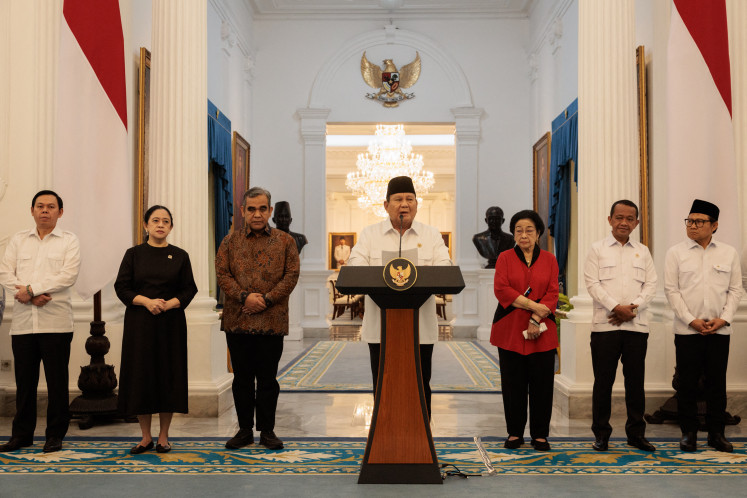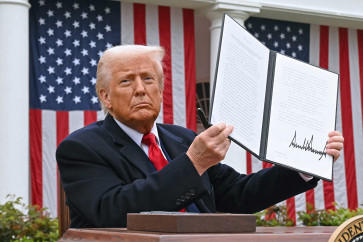Popular Reads
Top Results
Can't find what you're looking for?
View all search resultsPopular Reads
Top Results
Can't find what you're looking for?
View all search resultsThe Global South will pay for Trump’s trade war
As with previous self-inflicted economic crises, the US economy will undoubtedly suffer, but the heaviest burden will fall on the developing world.
Change text size
Gift Premium Articles
to Anyone
U
nited States President Donald Trump’s sweeping tariffs have unleashed economic chaos, roiling stock and bond markets and triggering panic around the world, especially in lower-income countries that rely heavily on exports to the US. The result could be an entirely manufactured global recession, with the developing world bearing the brunt.
The brief calm in financial markets following Trump’s abrupt announcement of a 90-day “pause” on most of his “reciprocal” tariffs, excluding those on Chinese imports, which he raised to 145 percent, has proven premature.
While some billionaires and loyalists may have made a killing by correctly interpreting Trump’s social media posts ahead of his sudden policy reversal, the disruptions to global trade and finance caused by his tariffs continue to pose serious risks.
Moreover, despite the pause on some tariffs, a universal 10 percent tariff on all US imports remains in effect, along with sector-specific tariffs of 25 percent on steel, aluminum, automobiles and auto parts.
There are new exemptions for smartphones, computers and other electronic devices, even as Trump has also threatened new duties on pharmaceuticals, semiconductors, copper and lumber. Taken together, these measures will reduce the availability of imported goods, raise prices for US consumers and impose steep costs on exporting countries.
But ultimately, the tariffs imposed on each country will depend on future negotiations, where the US is expected to play hardball. Trump has already made clear his disdain for foreign leaders, boasting that many were “kissing my ass” and willing to “do anything” to reverse the tariffs. As a result, the final scope of Trump’s tariffs remains uncertain.
Most critically, Trump’s latest tariff hike on Chinese imports all but ensures that the Sino-American trade war will continue to escalate. The increase to 145 percent is largely symbolic, a tit-for-tat move after China raised its own tariffs, since the previous 104 percent rate had already made most Chinese imports commercially unviable. In effect, the administration has signaled its intent to shut down trade with China.



















